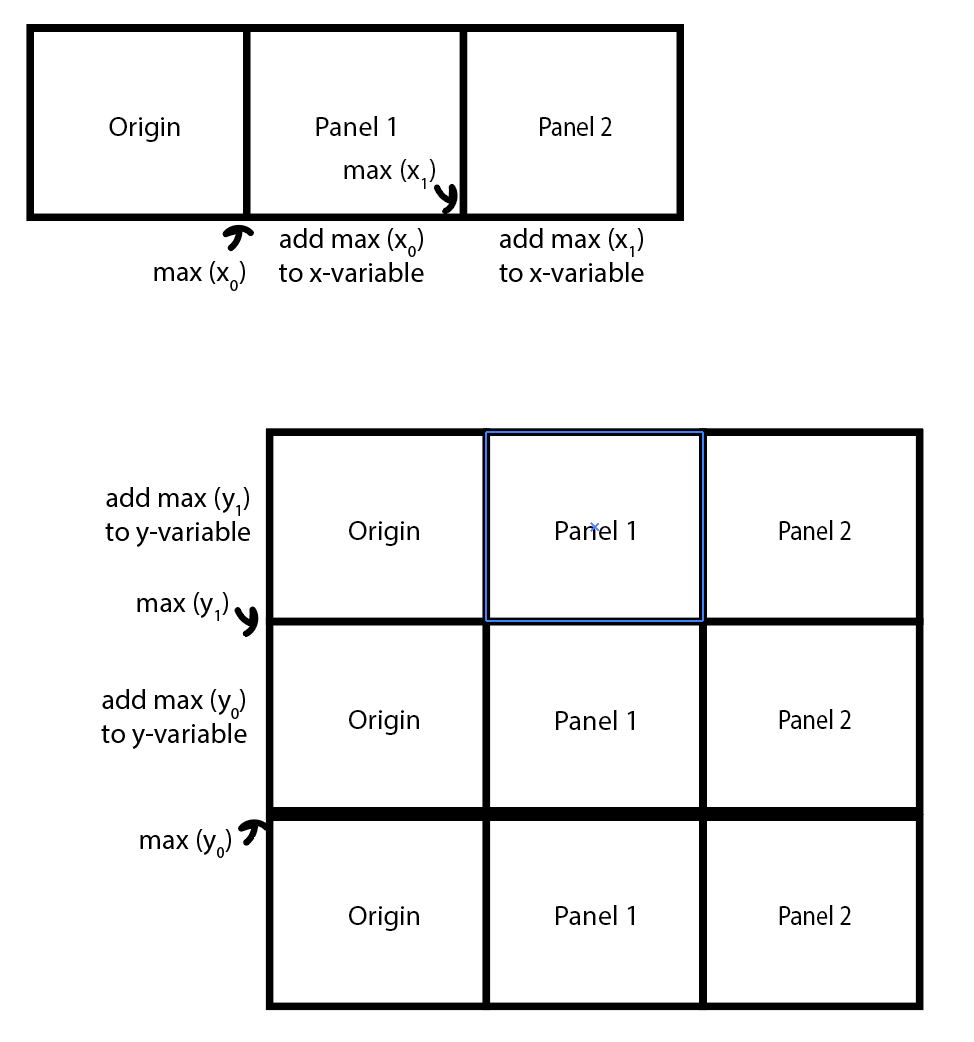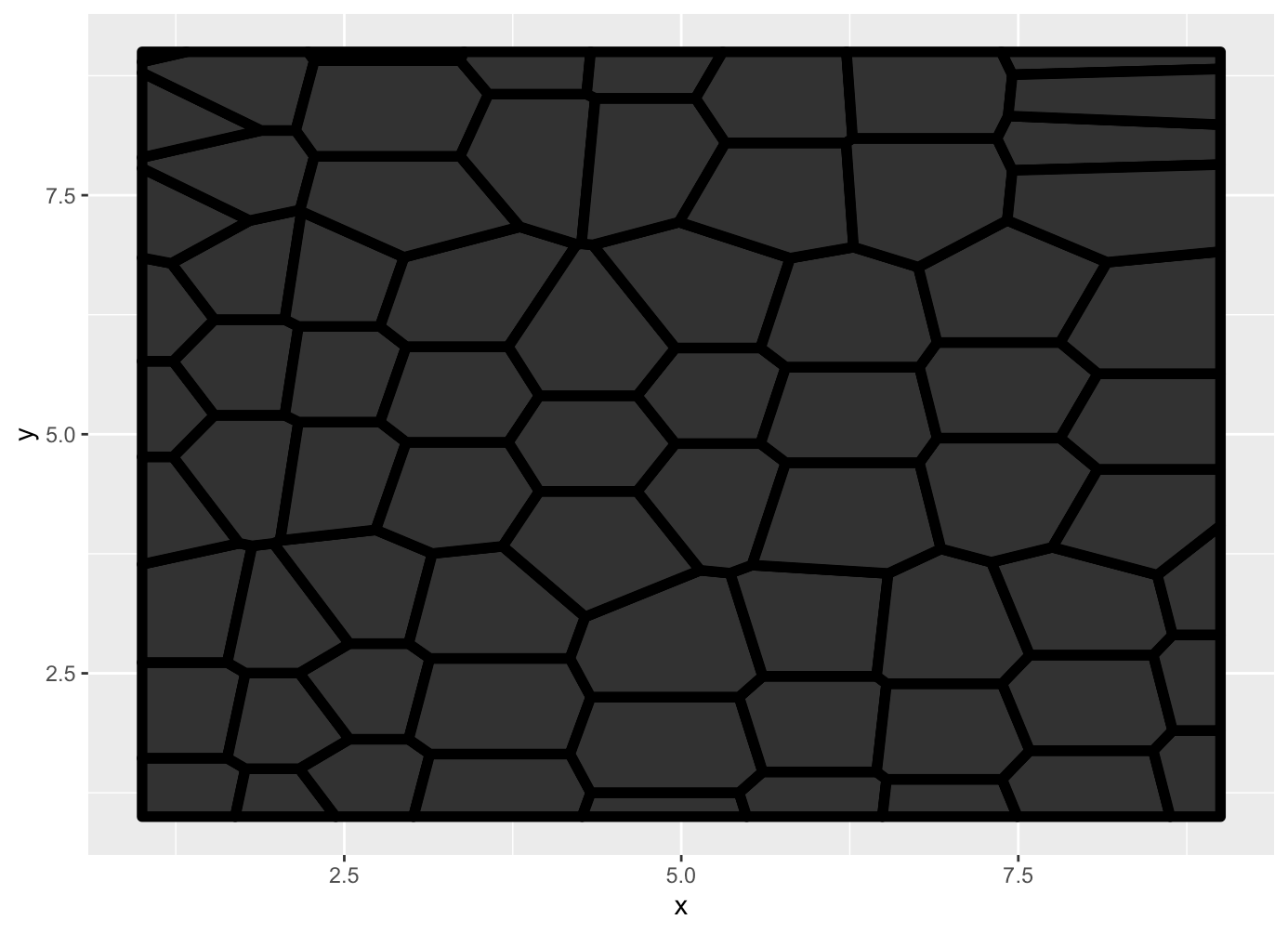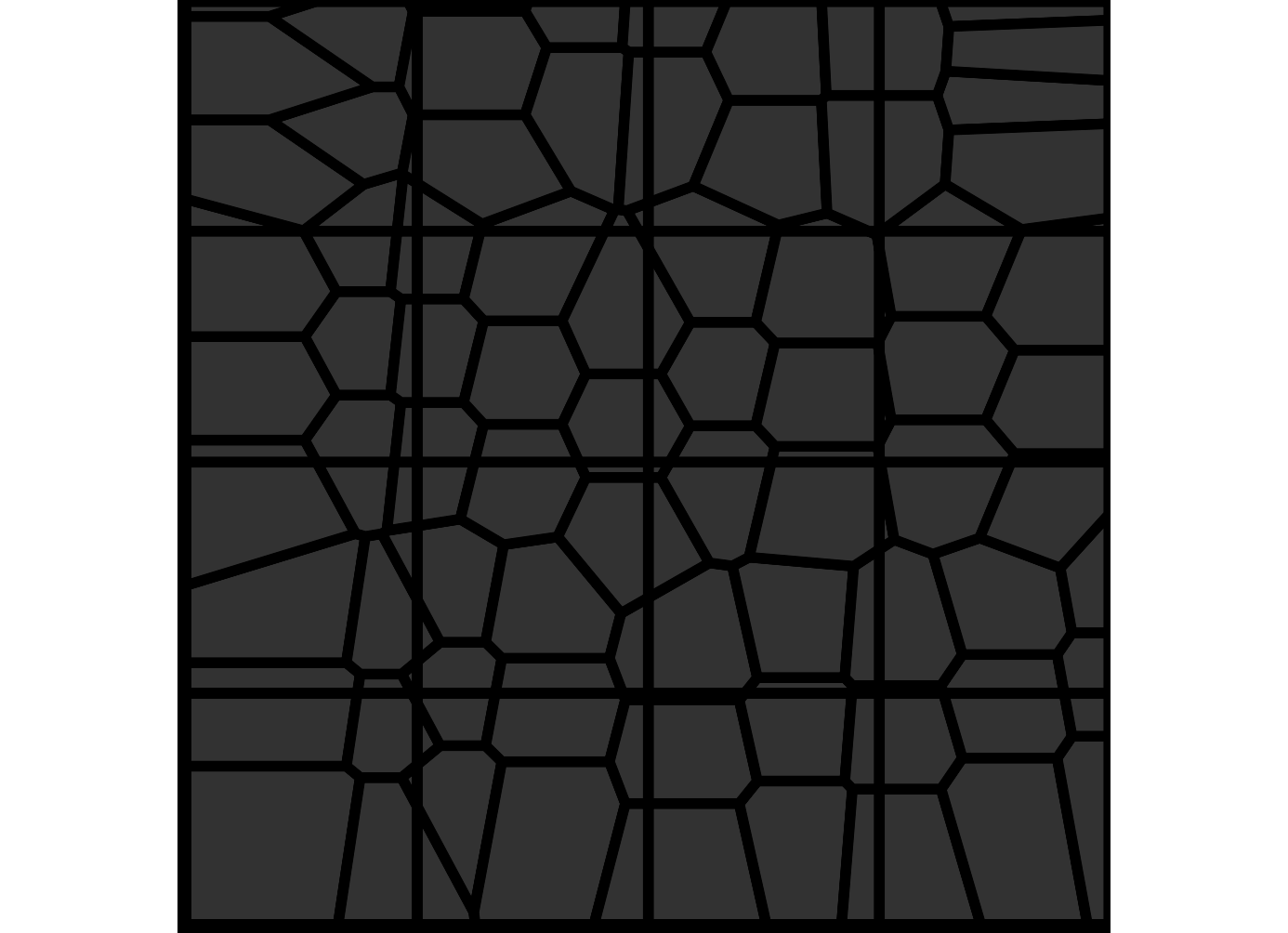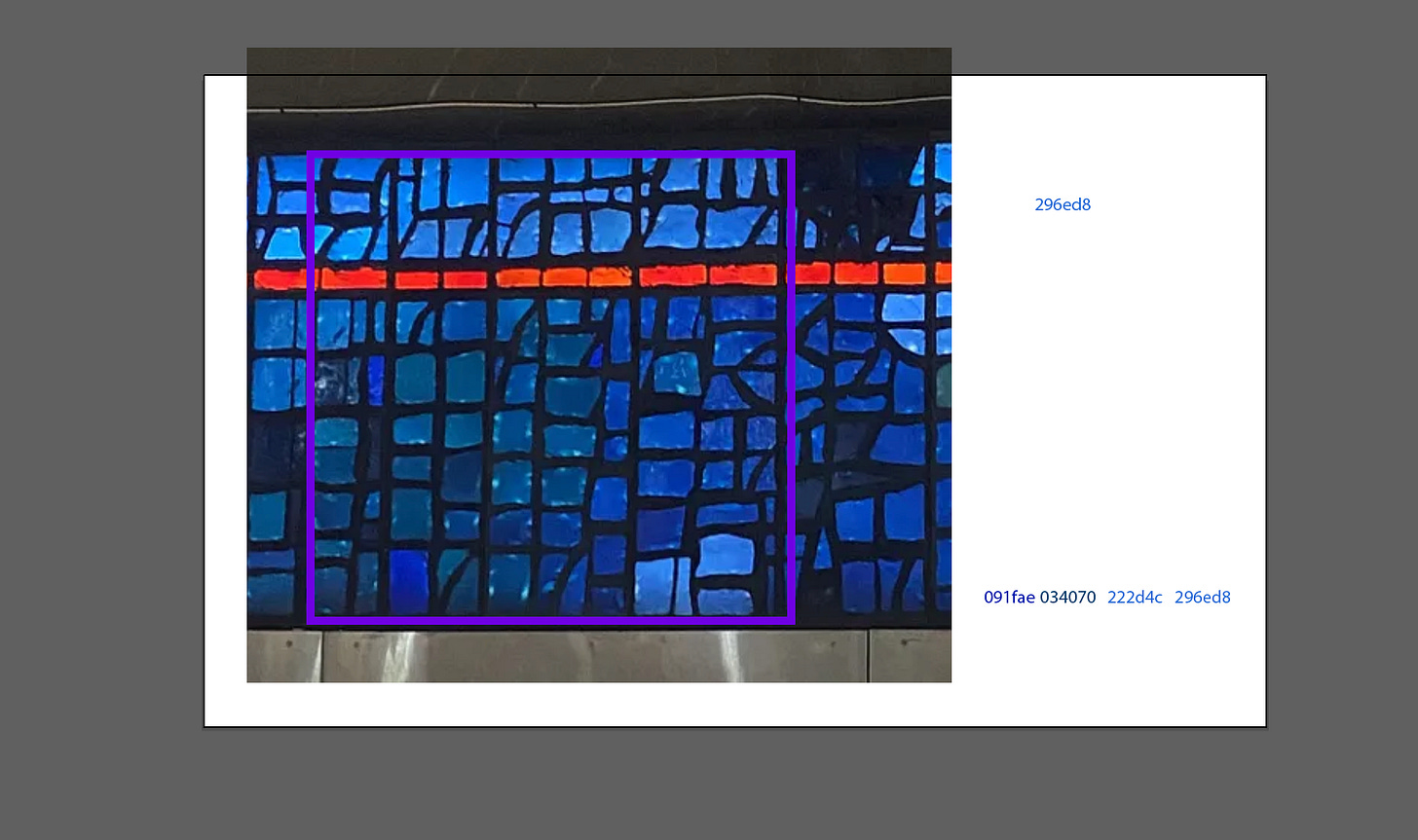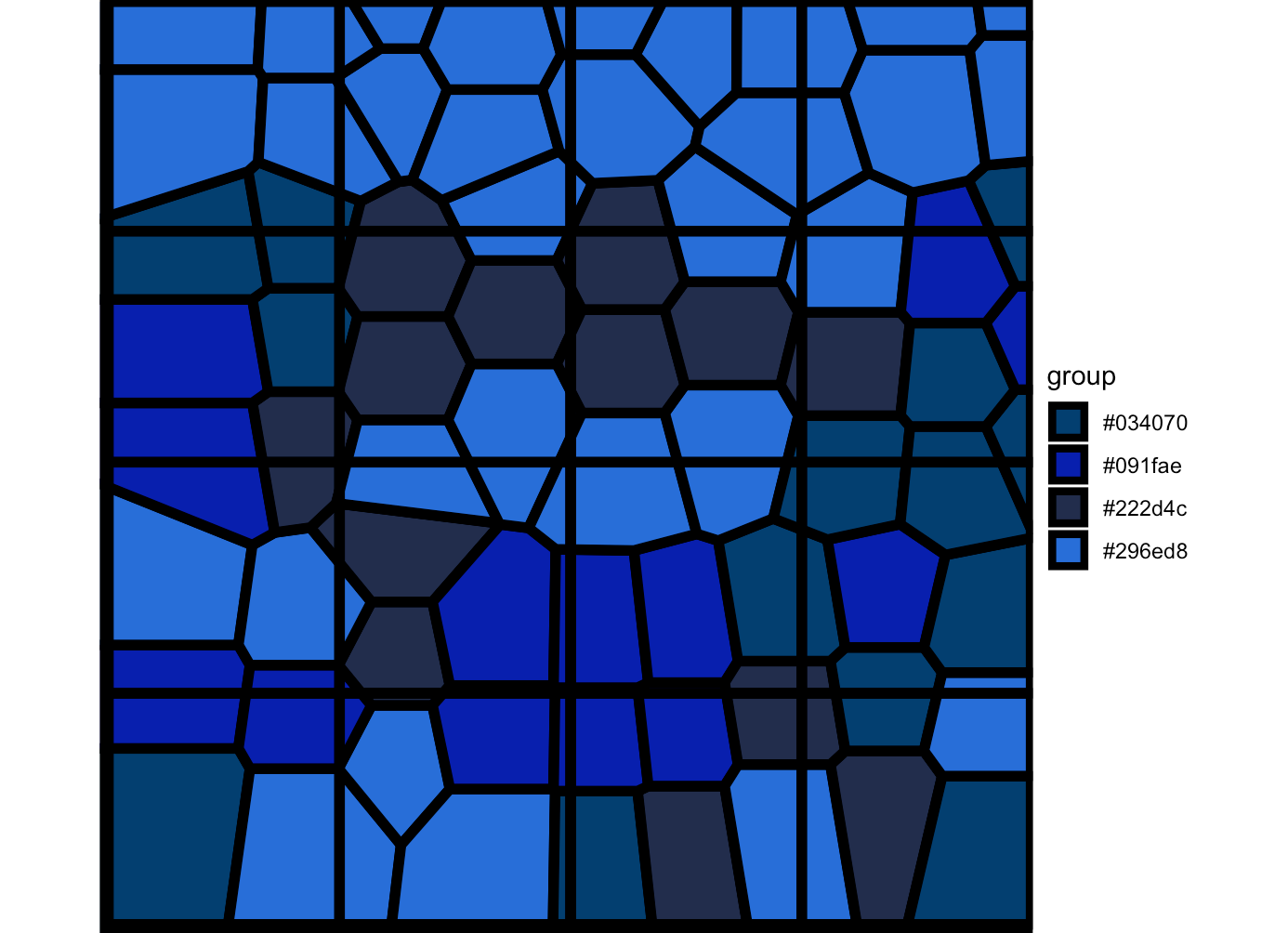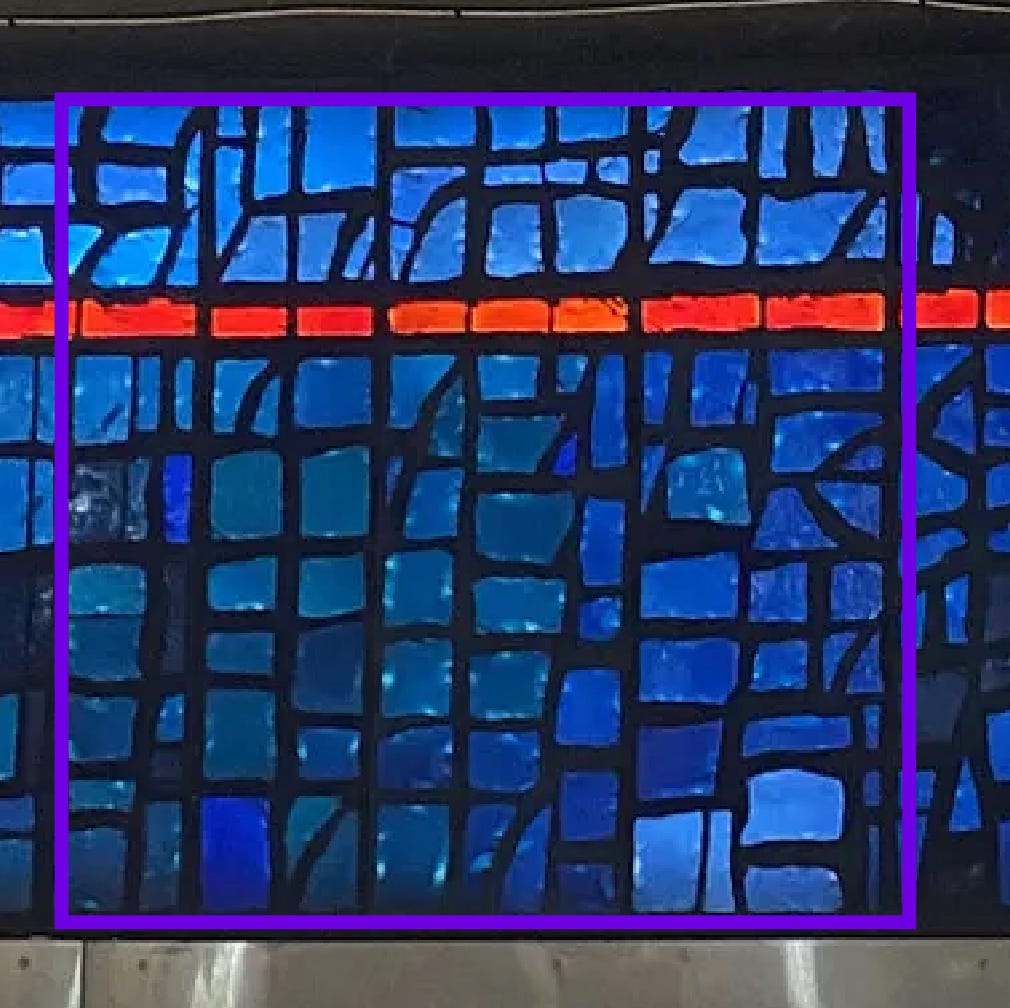Building notes: Remaking a piece of subway art that I had to stare at for a long time (because Boston transit can be like that sometimes)
Exactly as my Lana Del Ray-like song title suggests. What again was supposed to be silly turned to be an interesting adventure.
Introduction
My wife and I were waiting to take the bus (77) to Arlington for a double date. While my wife was reading (therefore not wanting me to interrupt her) I resigned myself to looking at this large mosaic art piece, which was probably meant to offset the concrete drabness of the underground bus stop. Pretending that this was my There’s a Tunnel under Ocean Boulevard moment, I stared at it:
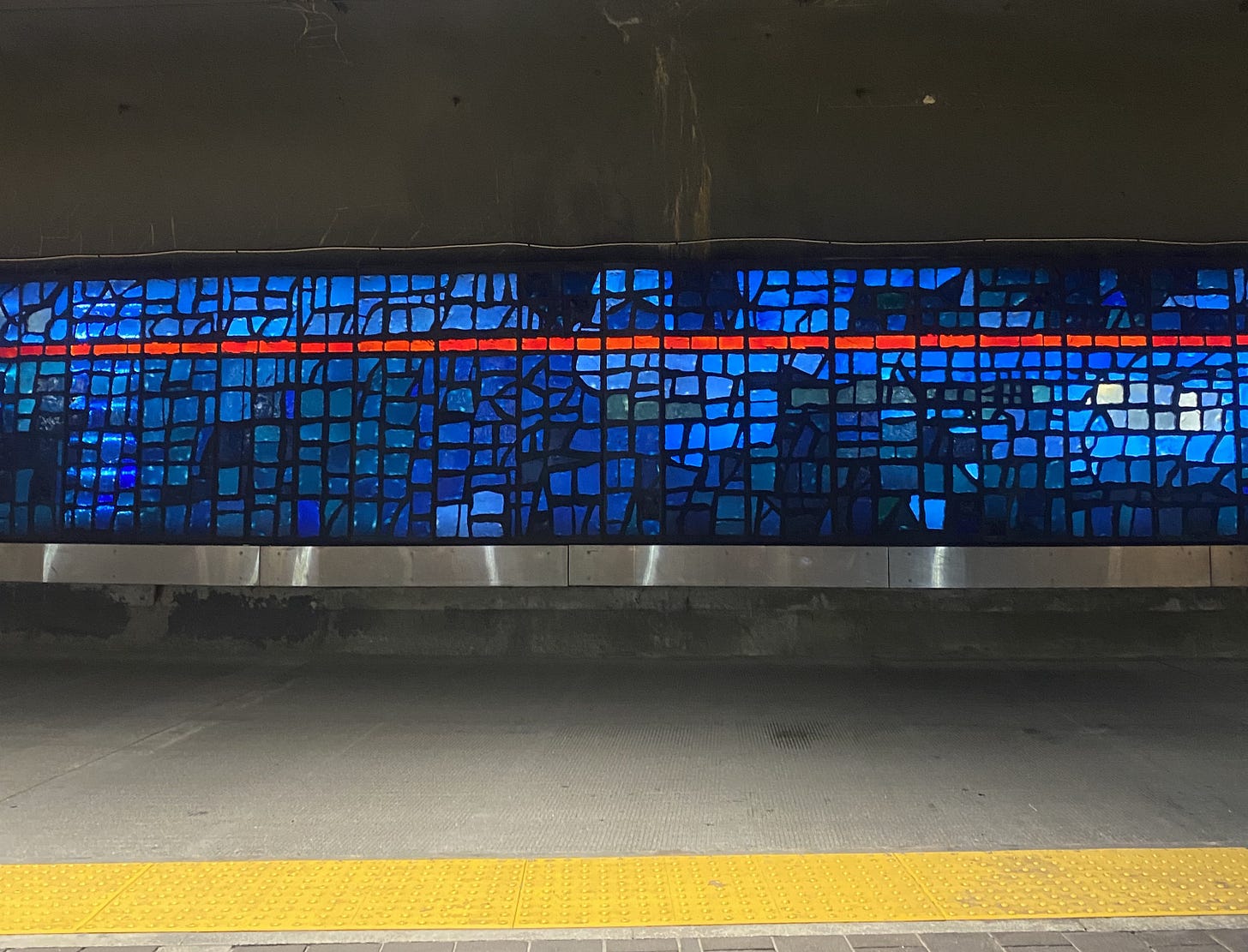
The art still maintains a grid structure, even though there’s a lot of organic paths within each panel. Out of boredom, I wondered how I would remake this in ggplot. A few minutes passed before I got frustrated and turned to my wife to ask how she would do it. With much of her attention focused on her book, she took the quickest glance up:
‘It looks like a Voronoi diagram.’
She turned her attention back to her novel.
Voronoi Diagrams
A Voronoi diagram is a way of dividing a space into regions based on distance to a set of generating points. It’s found in nature and has some really fun mathematics behind it. Highly recommend watching the video below:
I originally thought I would have the fun challenge of coding up the Voronoi cells (the algorithm is pretty interesting for anyone wanting to take a look). Unsurprisingly, we actually have a ggplot2 extension package for it: ggvoronoi.
Yesterday I started to code. Looking up from her novel, my wife again gave her recommendation:
“I’ll just start with a grid and add some noise”
generate_panel <- function(){
#Originally start with a grid
x = seq(1,3)
y = seq(1,3)
xy_df <-expand.grid(x=x, y=y)
#Add some gaussian noise
xy_df$x = xy_df$x + rnorm(3,mean = 0, sd = 0.25)
xy_df$y = xy_df$y + rnorm(3,mean = 0, sd = 0.25)
return(xy_df)
}So I basically make a 3×3 ‘grid’ (more like centroids), then for each centroid I add a bit of Gaussian noise:
Ok, it’s taking shape. This is an individual panel that would make up the larger square, but I want to ‘stack’ it. I found that if I create all of the Voronoi cells at once, it does not look like the art. So I need to separately generate a panel and combine them with each other, like this schematic shows:
Basically, I make the origin panel. I find the maximum x-value and add that to the x-values of the next panel (Panel 1) that I generate. Then I find the maximum x-value of Panel 1 and do the same thing with Panel 2. I’m joining the panels left to right, and then I stack these three panels on top of each other. I then join all of these into one data.frame:
Ok now I’m going to overlay another grid on top. I’m not sure how any of this works and honestly, I just fiddled with it until it looked good:
Now to add color. I’m going to my handy-dandy Illustrator. I picked a part of the panel that I liked and selected the colors with my eyedropper tool. I can’t really see a coloring pattern, but I do see that the lighter blues dominate the top, while the darker blues are on the bottom. So I might let R sample them instead of picking the space individually. But I’ll make it so that the top panels are going to get all the same color:
I also added the red band in. But I realized that it looks very flat. Look at this photo:
Notice that it’s quite splotchy!
To mimic this I generated a lot of random points. ‘points’ is for the entire square while ‘points_2’ is specifically for the red-banded area.
I realized that if I lower the opacity of the front-facing layer, I can give the illusion of texture, with the clustered points in the back automatically creating some lighted areas. I also used {ggfx}, which allowed me to put a glowing effect on these points (I’m not sure if it does anything, but it’s just an interesting package). It’s not perfect but I think this sells the illusion a lot better.
But I think this will be a fun challenge for people.
The messy code below:
library(ggvoronoi)
library(rayshader)
set.seed(24601)
generate_panel <- function(){
#Originally start with a grid
x = seq(1,3)
y = seq(1,3)
xy_df <-expand.grid(x=x, y=y)
#Add some gaussian noise
xy_df$x = xy_df$x + rnorm(3,mean = 0, sd = 0.25)
xy_df$y = xy_df$y + rnorm(3,mean = 0, sd = 0.25)
return(xy_df)
}
connect_left_right <- function(){
origin_panel <- generate_panel()
far_right_point_1 <-max(origin_panel$x)
panel_2 <- generate_panel()
panel_2$x <- panel_2$x + far_right_point_1
far_right_point_2 <- max(panel_2$x)
panel_3 <- generate_panel()
panel_3$x <- panel_3$x + far_right_point_2
far_right_point_3 <- max(panel_3$x)
panel_all <- rbind(origin_panel, panel_2, panel_3)
}
generate_total <- function(){
colors <- c("#091fae","#034070","#222d4c","#296ed8")
bottom <- connect_left_right()
bottom$group <- sample(colors, nrow(bottom), replace = TRUE)
middle <- connect_left_right()
middle$group <- sample(colors, nrow(middle), replace = TRUE)
top <- connect_left_right()
top$group <- "#296ed8"
top_point_1 <- max(bottom$y)
middle$y = top_point_1 + middle$y
top_point_2 <- max(middle$y)
top$y = top_point_2 + top$y
all_grid <- rbind(bottom, middle, top)
}
xy_all <- generate_total()
grid_overlay <- expand.grid(x=seq(1.2,7.9,length=4),
y= seq(1.2,7.9,length = 4))
outline <- data.frame(x = c(0, 9, 9, 0),
y = c(0, 0, 9,9))
grid_red_overlay <- expand.grid(x = seq(0.69, 8.5, length = 8),
y = c(6.5))
points <- data.frame(x= runif(9000, min = 0, max= 9),
y= runif(9000, min = 0, max= 9))
points_2 <- data.frame(x= runif(1000,min = 0.69, max = 8.5),
y= runif(1000, min = 6.20, max= 6.9))
a <- ggplot()+
with_outer_glow(
geom_point(data =points ,
aes(x = x, y =y),
size = 3.3, alpha = 1,
color = '#222d4c'),
colour = 'white',
sigma = 10,
expand =1) +
geom_voronoi(data = xy_all ,
aes(x = x, y =y, fill = group),
outline = outline,
color = 'black', size = 2, alpha =0.7)+
geom_tile(data = grid_overlay,
aes(x =x, y=y),fill=NA,
alpha = 1,color= 'black', size = 2)+
with_inner_glow(
geom_point(data =points_2 ,
aes(x = x, y =y),
size = 3, alpha = 1,
color = '#222d4c'),
colour = 'pink',
sigma = 10)+
geom_tile(data = grid_red_overlay,
aes(x =x, y =y), fill ='#f31623',
color = 'black', size = 2, alpha = 0.8) +
scale_fill_manual(values = c(
"#091fae" ="#091fae" ,
"#034070" = "#034070",
"#222d4c" = "#222d4c",
"#296ed8" = "#296ed8"
)) +
scale_x_continuous(expand = c(0,0))+
scale_y_continuous(expand = c(0,0))+
coord_equal()+
theme_void() +
theme(legend.position = 'none')
a





